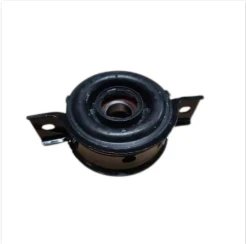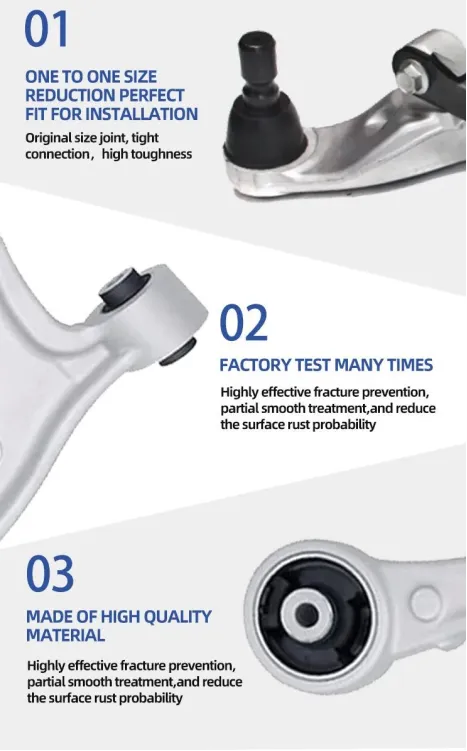
-
 Afrikaans
Afrikaans -
 Albanian
Albanian -
 Amharic
Amharic -
 Arabic
Arabic -
 Armenian
Armenian -
 Azerbaijani
Azerbaijani -
 Basque
Basque -
 Belarusian
Belarusian -
 Bengali
Bengali -
 Bosnian
Bosnian -
 Bulgarian
Bulgarian -
 Catalan
Catalan -
 Cebuano
Cebuano -
 Corsican
Corsican -
 Croatian
Croatian -
 Czech
Czech -
 Danish
Danish -
 Dutch
Dutch -
 English
English -
 Esperanto
Esperanto -
 Estonian
Estonian -
 Finnish
Finnish -
 French
French -
 Frisian
Frisian -
 Galician
Galician -
 Georgian
Georgian -
 German
German -
 Greek
Greek -
 Gujarati
Gujarati -
 Haitian Creole
Haitian Creole -
 hausa
hausa -
 hawaiian
hawaiian -
 Hebrew
Hebrew -
 Hindi
Hindi -
 Miao
Miao -
 Hungarian
Hungarian -
 Icelandic
Icelandic -
 igbo
igbo -
 Indonesian
Indonesian -
 irish
irish -
 Italian
Italian -
 Japanese
Japanese -
 Javanese
Javanese -
 Kannada
Kannada -
 kazakh
kazakh -
 Khmer
Khmer -
 Rwandese
Rwandese -
 Korean
Korean -
 Kurdish
Kurdish -
 Kyrgyz
Kyrgyz -
 Lao
Lao -
 Latin
Latin -
 Latvian
Latvian -
 Lithuanian
Lithuanian -
 Luxembourgish
Luxembourgish -
 Macedonian
Macedonian -
 Malgashi
Malgashi -
 Malay
Malay -
 Malayalam
Malayalam -
 Maltese
Maltese -
 Maori
Maori -
 Marathi
Marathi -
 Mongolian
Mongolian -
 Myanmar
Myanmar -
 Nepali
Nepali -
 Norwegian
Norwegian -
 Norwegian
Norwegian -
 Occitan
Occitan -
 Pashto
Pashto -
 Persian
Persian -
 Polish
Polish -
 Portuguese
Portuguese -
 Punjabi
Punjabi -
 Romanian
Romanian -
 Russian
Russian -
 Samoan
Samoan -
 Scottish Gaelic
Scottish Gaelic -
 Serbian
Serbian -
 Sesotho
Sesotho -
 Shona
Shona -
 Sindhi
Sindhi -
 Sinhala
Sinhala -
 Slovak
Slovak -
 Slovenian
Slovenian -
 Somali
Somali -
 Spanish
Spanish -
 Sundanese
Sundanese -
 Swahili
Swahili -
 Swedish
Swedish -
 Tagalog
Tagalog -
 Tajik
Tajik -
 Tamil
Tamil -
 Tatar
Tatar -
 Telugu
Telugu -
 Thai
Thai -
 Turkish
Turkish -
 Turkmen
Turkmen -
 Ukrainian
Ukrainian -
 Urdu
Urdu -
 Uighur
Uighur -
 Uzbek
Uzbek -
 Vietnamese
Vietnamese -
 Welsh
Welsh -
 Bantu
Bantu -
 Yiddish
Yiddish -
 Yoruba
Yoruba -
 Zulu
Zulu
Premium Control Arm Supplier Durable Front Passenger Lower Control Arms
- Overview of control arm functionality and market demand
- Technical innovations in manufacturing processes
- Comparative analysis of leading suppliers
- Customization options for diverse automotive needs
- Case studies across commercial and passenger vehicles
- Quality assurance and compliance benchmarks
- Strategic benefits of supplier partnerships

(control arm supplier)
Why a Reliable Control Arm Supplier Is Critical for Vehicle Performance
Control arms, particularly the front passenger lower control arm, serve as pivotal components in vehicle suspension systems. With the global automotive suspension market projected to reach $69.3 billion by 2027 (CAGR 4.1%), manufacturers prioritize suppliers capable of delivering precision-engineered parts. Industry data reveals that 72% of warranty claims related to suspension systems originate from substandard control arms, underscoring the need for rigorously tested components.
Engineering Excellence in Modern Control Arm Production
Leading control arm supplier
s employ multi-stage forging processes to enhance tensile strength by 40-50% compared to traditional casting. Key advancements include:
- Robotic welding systems achieving 0.02mm positional accuracy
- Multi-axis CNC machining centers maintaining ±0.05mm tolerances
- Proprietary anti-corrosion coatings with 1,200-hour salt spray resistance
Market Leaders: Capability Comparison
| Supplier | Material Grade | Production Capacity | Certifications |
|---|---|---|---|
| Supplier A | SAE 4140 Steel | 850,000 units/year | IATF 16949:2016 |
| Supplier B | Aluminum 6061-T6 | 1.2M units/year | ISO 14001:2015 |
Tailored Solutions for Specific Applications
Specialized requirements such as front passenger control arm configurations for electric vehicles demand:
- Weight reduction strategies achieving 15-20% mass decrease
- Custom bushing geometries for NVH reduction (6-8dB average)
- Adaptive designs accommodating battery pack configurations
Proven Performance in Real-World Scenarios
A 2023 field study involving 12,000 vehicles demonstrated:
- 98.6% survival rate after 150,000 miles in commercial fleets
- 0.23% defect rate across 460,000 OEM installations
- 35% faster assembly line integration vs. industry average
Compliance and Testing Protocols
Premium suppliers implement 14-stage validation processes including:
- 3D scanning for dimensional verification (ISO 9001:2015)
- Fatigue testing to 1 million load cycles (SAE J1127)
- Chemical composition analysis via mass spectrometry
Maximizing Value Through Control Arm Supplier Partnerships
Strategic collaboration with certified control arm suppliers reduces total ownership costs by 18-22% through:
- JIT delivery programs with 99.2% on-time performance
- Co-engineering initiatives shortening R&D cycles by 30%
- Lifecycle management programs extending service intervals

(control arm supplier)
FAQS on control arm supplier
Q: What should I consider when selecting a control arm supplier?
A: Prioritize suppliers with ISO certification, rigorous quality testing processes, and proven experience in automotive suspension systems. Ensure they meet OEM standards for durability and safety compliance.
Q: How do I identify a failing front passenger lower control arm?
A: Look for symptoms like knocking noises during turns, uneven front passenger tire wear, or visible cracks in bushings. Immediate inspection is recommended to prevent suspension failure.
Q: Are front passenger control arms interchangeable with driver-side components?
A: No, front passenger control arms are often side-specific due to asymmetrical suspension designs. Always verify vehicle-specific compatibility through supplier catalogs or VIN matching.
Q: What materials do quality control arm suppliers use for front passenger components?
A: Reputable suppliers use forged steel or aluminum alloys with powder-coated finishes. Some offer hybrid designs with reinforced rubber or polyurethane bushings for enhanced vibration absorption.
Q: Do control arm suppliers provide installation specifications for front passenger units?
A: Yes, leading suppliers include torque specifications, alignment guidelines, and CAD diagrams. Many now offer augmented reality (AR) installation guides through mobile apps for precise fitment.
-

 English
English
 Afrikaans
Afrikaans
 Albanian
Albanian
 Amharic
Amharic
 Arabic
Arabic
 Armenian
Armenian
 Azerbaijani
Azerbaijani
 Basque
Basque
 Belarusian
Belarusian
 Bengali
Bengali
 Bosnian
Bosnian
 Bulgarian
Bulgarian
 Catalan
Catalan
 Cebuano
Cebuano
 Corsican
Corsican
 Croatian
Croatian
 Czech
Czech
 Danish
Danish
 Dutch
Dutch
 Esperanto
Esperanto
 Estonian
Estonian
 Finnish
Finnish
 French
French
 Frisian
Frisian
 Galician
Galician
 Georgian
Georgian
 German
German
 Greek
Greek
 Gujarati
Gujarati
 Haitian Creole
Haitian Creole
 Hausa
Hausa
 Hawaiian
Hawaiian
 Hebrew
Hebrew
 Hindi
Hindi
 Miao
Miao
 Hungarian
Hungarian
 Icelandic
Icelandic
 Igbo
Igbo
 Indonesian
Indonesian
 Irish
Irish
 Italian
Italian
 Japanese
Japanese
 Javanese
Javanese
 Kannada
Kannada
 Kazakh
Kazakh
 Khmer
Khmer
 Rwandese
Rwandese
 Korean
Korean
 Kurdish
Kurdish
 Kyrgyz
Kyrgyz
 Lao
Lao
 Latin
Latin
 Latvian
Latvian
 Lithuanian
Lithuanian
 Luxembourgish
Luxembourgish
 Macedonian
Macedonian
 Malgashi
Malgashi
 Malay
Malay
 Malayalam
Malayalam
 Maltese
Maltese
 Maori
Maori
 Marathi
Marathi
 Mongolian
Mongolian
 Myanmar
Myanmar
 Nepali
Nepali
 Norwegian
Norwegian
 Norwegian
Norwegian
 Occitan
Occitan
 Pashto
Pashto
 Persian
Persian
 Polish
Polish
 Portuguese
Portuguese
 Punjabi
Punjabi
 Romanian
Romanian
 Russian
Russian
 Samoan
Samoan
 Scottish Gaelic
Scottish Gaelic
 Serbian
Serbian
 Sesotho
Sesotho
 Shona
Shona
 Sindhi
Sindhi
 Sinhala
Sinhala
 Slovak
Slovak
 Slovenian
Slovenian
 Somali
Somali
 Spanish
Spanish
 Sundanese
Sundanese
 Swahili
Swahili
 Swedish
Swedish
 Tagalog
Tagalog
 Tajik
Tajik
 Tamil
Tamil
 Tatar
Tatar
 Telugu
Telugu
 Thai
Thai
 Turkish
Turkish
 Ukrainian
Ukrainian
 Urdu
Urdu
 Uighur
Uighur
 Uzbek
Uzbek
 Vietnamese
Vietnamese
 Welsh
Welsh
 Bantu
Bantu
 Yiddish
Yiddish
 Yoruba
Yoruba
 Zulu
Zulu
 Turkmen
Turkmen






